

EXPLORE BY TOPIC:
  Our top 10 resources
Our top 10 resources
  Childhood / Early Life
Childhood / Early Life
  Chronic Stress
Chronic Stress
  Education
Education
  Food Security
Food Security
  Genetics
Genetics
  Jobs & Work
Jobs & Work
  Housing / Neighborhoods
Housing / Neighborhoods
  Income & Wealth
Income & Wealth
  Race / Racism
Race / Racism
  Social Inclusion
Social Inclusion
  Policy & Change
Policy & Change





Buy the DVD
e-Newsletter
FAQs
Contact Us
Site Map
Home

|
 |


|
Background: To paraphrase the Institute of Medicine’s (IOM) 2002 report on public health: what can we as a society do to fulfill our ongoing interest in assuring the conditions for people to be healthy?
Decisions that governments and corporations make every day benefit some and burden others. Unfortunately, they often reinforce class, racial and gender inequities that contribute to unequal patterns of illness and premature death. Building a social movement that can advocate effectively for more equitable social and economic policies is critical to changing our economic, physical and social environments so that they promote rather than threaten our health.
In other words, tackling health inequities is unavoidably a matter of politics; of engaging in struggles over how we want our government to allocate resources, regulate corporate power, and implement the principles of democracy.
Tony Iton, MD, director of the Alameda County Public Health Department in California, points out that social policies that produce and reproduce class and racial inequality have, over time, “taken many forms, including racially restrictive covenants on property, economic redlining in banking practices, school segregation, [unfair] housing and urban renewal policies, disinvestment in public transportation, discriminatory zoning practices, law enforcement racial profiling, [discriminatory] incarceration policies, and other deliberate governmental policies and practices.”
But we’ve also made many changes during the last century that have improved health equity by improving peoples’ lives: the eight-hour work day, universal public high school, the right to collective bargaining, social security, civil rights, environmental standards... There’s no reason why we can’t do so again.
Opportunities for change abound. Iton and others suggest a wide range of tangible policy options, including quality universal preschool, improved public school funding, living wage laws, affordable housing, land use and zoning reform, improved public transit, fair immigration policies, criminal justice reform, and, of course, full employment, fair trade and even progressive tax policy.
Some of these policy changes will be driven locally, some on the state level, others on the federal level. In general, they fall within three categories:
• Tackling inequality and improving living standards. These policies aim to close the gap between the rich and the rest of us, and between white people and people of color, such as living wage jobs, more equitable tax policy, affirmative action and family supports.
• Protecting those at the bottom of the pyramid. These policies protect under-resourced households and communities from health threats posed by the chaos and uncertainty of free markets. They promote not only additional programs and services, but more equitable allocation of public resources through needed social investments (such as quality schools, affordable housing, and public transit) so that the means for achievement are more available to those with fewer individual resources.
• Reforming decision-making. These policies aim to open and democratize decision-making processes that too often are dominated by concentrated economic and political power. Successful policy change depends more than anything else on those most affected by injustice working together to set priorities, generate solutions, make their voices heard, and to organize effectively to hold government accountable.
How does one advance “health in all policies”? How can local, state and national public policy action in support of health equity be brought about? What is the legislative agenda? What are the policy and program levers? What does this imply for organizations’ own strategies and structures? How do engaged groups communicate with each other and so avoid having to climb the same learning curve over and over again? How can a comprehensive and sustained health equity focus and movement best be built? Can these initiatives be brought together under one health equity national strategy, umbrella or coalition? Should they?
The articles and media in this “policy and change” section address some of the policies and strategies tackling patterns of advantage and deprivation, of hope and despair, and of health and illness.

|
|
|
| |
|
Policy & Change: 0 items found |
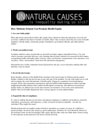 How Medical Schools Can Promote Health Equity (pdf) How Medical Schools Can Promote Health Equity (pdf) 
UNNATURAL CAUSES, 2009 This two-sided handout presents some ideas for medicals schools to use their unique position to promote health equity. |
 |
 How U.S. Laws and Social Policies Influence Chronic Stress and Health Disparities How U.S. Laws and Social Policies Influence Chronic Stress and Health Disparities 
SCHOLARLY ARTICLE, Holly Avey, Politics of Race, Culture, and Health Symposium, Ithaca College, Nov. 14, 2002 A clear, thorough overview explaining the stress process (exposures and vulnerabilities to stressors), physiological response to stressors (how stress "gets into the body"), and why people of color and lower socioeconomic status tend to be more negatively affected by stress. Concludes with policy implications. |
 |
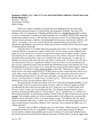 How U.S. Laws and Social Policies Influence Chronic Stress and Health Disparities - A Response (pdf) How U.S. Laws and Social Policies Influence Chronic Stress and Health Disparities - A Response (pdf) 
SCHOLARLY ARTICLE by Thomas C. Shevory, Ithaca College, 2002 A short response to Holly Avey's literature review that provides additional background and references regarding misconceptions of the character traits of "the poor" vs. "the affluent," chronic stressors, and the need for structural policy intervention. |
 |
 In the U.S., we don't take enough vacations - really In the U.S., we don't take enough vacations - really 
ESSAY by John de Graaf, San Francisco Chronicle, August 2008 De Graaf compellingly makes the case for federally guaranteed paid time off for all employees by laying out the links between vacation, productivity, child-rearing, and health. |
 |
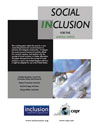 Inclusion for the United States (pdf) Inclusion for the United States (pdf) 
REPORT from Inclusion.org and the Center for Economic Policy and Research This working paper makes the case for a new, overarching framework—social inclusion—to advance and integrate social policy. It critiques the current poverty framework and the official U.S. poverty measure, and explains why the concept of social inclusion is a better alternative. The paper discusses how the concept of social inclusion is used in the United Kingdom and how it might be adapted for use in the United States. |
 |
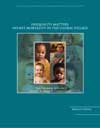 Inequality Matters: Infant Mortality in the Global Village Inequality Matters: Infant Mortality in the Global Village 
REPORT by Ronald David, from the Joint Center Health Policy Institute, 2008 This background paper seeks to expand our understanding of the causes and effects of infant mortality within a broader global context. It offers comparisons between infant mortality in the U.S. and in other nations across the globe, providing a compassionate examination of the impact of social and economic inequalities on population health and infant mortality. The author concludes with policy recommendations to help mitigate or eliminate the inequalities that contribute to infant mortality. |
 |
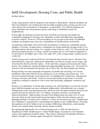 Infill Development, Housing Costs, and Public Health (pdf) Infill Development, Housing Costs, and Public Health (pdf) 
EDITORIAL by Rajiv Bhatia, Director of the San Francisco Department of Public Health’s Occupational and Environmental Health Section While acknowledging the great potentials of infill development to curb sprawl and revitalize city centers, Bhatia calls attention to the great need for decision-makers to consider the needs of existing residents. Among other things, he recommends a Health Impact Assessment (HIA) for affected communities during the planning process. |
 |
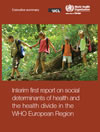 Interim first report on social determinants of health and the health divide in the WHO European Region Interim first report on social determinants of health and the health divide in the WHO European Region 
Sir Michael Marmot on behalf of the WHO Although health has improved for many people, there are major inequalities in health - within and between countries - across the WHO European Region. Evidence shows that these inequalities should be mostly avoidable and has significant human and economic costs. Unless action is taken, the gap between and within countries will increase. The WHO Regional Office for Europe commissioned a regional review of the health divide and inequalities in health from July 2010 to 2012 in order to inform the new health policy for the Region. The first phase of the review is assessing levels of inequalities in health across the European Region and identifying the barriers to and opportunities for reducing these. |
 |
 International Making Cities Livable International Making Cities Livable 
WEB SITE The International Making Cities Livable Conferences were founded in 1985, and are held biannually in the United States and Europe. They are unique in enabling city officials, architects, planners, developers, community leaders, behavioral scientists, artists and others responsible for the livability of their cities to exchange experiences, ideas and expertise.
|
 |
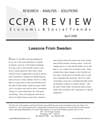 Lessons From Sweden (pdf) Lessons From Sweden (pdf) 
ARTICLE in the Review of Economic and Social Trends, April 2008 An excellent four-page primer on the Swedish model of social protections, prepared by the Canadian Centre for Policy Alternatives. There have been changes to the Swedish welfare state over the past two decades and, in some areas, inequality has increased. However, other social policy areas have expanded and other forms of inequality continue to steadily decline. Like the other Nordic lands, Sweden has been considerably more resistant to the ‘imperatives’ of global integration, and the article considers what we could all learn from their experiences. |
 |
 Life in a Town Without Poverty Life in a Town Without Poverty 
Dr. Evelyn Forget Once upon a time in Canada, there was a town where no one was poor. That might seem like a fairy tale, but it's an historic fact. From 1974 through 1978, as part of a labour market experiment called MINCOME, all of the almost 13,000 citizens in and around Dauphin, Manitoba were guaranteed annual income support to keep them above the poverty line.
With support from CIHR, Dr. Forget has spent three years comparing the administrative health care records of Dauphin's citizens between 1974 and 1978 with those of a control group of people living in similar Manitoba communities at that time. She found that people appear to live healthier lives when they don't have to worry about poverty. |
 |
 Local Health Department National Coalition for Health Equity Local Health Department National Coalition for Health Equity 
ONLINE COMMUNITY hosted by the National Association of County and City Health Officials A learning community for local and state health departments and their staff to connect, share strategies, and develop regional alliances, hosted by NACCHO.
|
 |
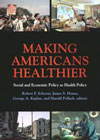 Making Americans Healthier: Social and Economic Policy as Health Policy Making Americans Healthier: Social and Economic Policy as Health Policy 
BOOK edited by Schoeni, House, Kaplan, and Pollack, 2008 In this collection, a group of multidisciplinary experts shows how social and economic policies seemingly unrelated to medical well-being have dramatic consequences for the health of the American people. The work presents ground-breaking evidence to convincingly demonstrate that ultimately social and economic policy is health policy. |
 |
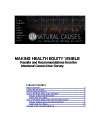 Making Health Equity Visible: Results and Recommendations from the Unnatural Causes User Survey Making Health Equity Visible: Results and Recommendations from the Unnatural Causes User Survey 
UNNATURAL CAUSES, 2009 In December 2008, California Newsreel conducted a web-based survey to better ascertain just how UNNATURAL CAUSES was being used as a tool to educate, organize, and advocate for health equity. Based on the survey findings, feedback from outreach partners, and the observations of our team, we compiled recommendations for using Unnatural Causes more effectively in the development and mobilization of a stronger movement for health equity.
You can also download the PDF of the raw charts for each question.
|
 |
 Making it Politic(al): Closing the Gap in a Generation Making it Politic(al): Closing the Gap in a Generation 
Anne-Emanuelle Birn The anniversary of the publication of Closing the Gap in a Generation (CGG) offers a moment to reflect on the report’s contributions and shortcomings, as well as to consider the political waters ahead. This article highlights the report's contributions to the field of health inequity research while underscoring its limitations. Ultimately, in its understated references to social justice movements and organizations, its more pointed discussions of civil society’s role,and its advocacy of social redistribution and social protection across the lifecourse, CGG leaves the door open for more transformative change. |
 |
Miles to Go before We Sleep: Racial Inequities in Health 
ARTICLE by David R. Williams, Journal of Health and Social Behavior 53(3) 279-295
Large, pervasive, and persistent racial inequalities exist in the onset, courses, and outcomes of illness. A comprehensive understanding of the patterning of racial disparities indicates that racism in both its institutional and individual forms remains an important determinant. There is an urgent need to build the science base that would identify how to trigger the conditions that would facilitate needed societal change and to identify the optimal interventions that would confront and dismantle the societal conditions that create and sustain health inequalities. |
 |
 MomsRising.org MomsRising.org 
WEB SITE An online, grassroots movement working for mandatory paid maternity and paternity leave, open flexible work, healthcare for all kids, excellent childcare, realistic and fair wages, and healthy afterschool options for all children. |
 |
 Money Driven Medicine Money Driven Medicine 
DOCUMENTARY distributed by California Newsreel, 2009 This important new documentary, produced by Academy Award winner Alex Gibney (Taxi to the Dark Side, Enron: The Smartest Guys in the Room), explores how the medical-industrial complex coupled with often perverse fee-for-service incentives brings us high cost yet poor performance health care. Money Driven Medicine pierces the myths about costs that all Americans need to know to participate in the battle over health care reform. |
 |
 Moving upstream: Working together to create healthier communities Moving upstream: Working together to create healthier communities 
DVD and REPORT, Blue Cross and Blue Shield of Minnesota Foundation In 2006, the Blue Cross and Blue Shield Foundation hosted a statewide policy forum on social determinants of health. Minnesota leaders in health, housing, early childhood development, environment, government, nonprofit and philanthropy gathered to discuss how these different sectors can work together to improve community health. Nationally acclaimed speakers - including UNNATURAL CAUSES featured scholars Ichiro Kawachi, Camara Jones, and Jim Krieger - shared research and ideas for focusing efforts “upstream,” on social, economic and environmental factors that influence health.
The 3-DVD set and/or print materials on the proceedings are available to organizations free of charge. |
 |
 National Scientific Council on the Developing Child National Scientific Council on the Developing Child 
WEB SITE The NSCDC is a multi-disciplinary collaboration comprising leading scholars in neuroscience, early childhood development, pediatrics, and economics. Created to seize the opportunity that arose from response to the landmark report from the National Research Council and Institute of Medicine, From Neurons to Neighborhoods, the Council works to build strong, informed, bipartisan leadership in both the public and private sectors to close the gap between what we know and what we do to promote successful learning, adaptive behavior, and sound physical and mental health for all young children. |
 |
 No Time to Be Sick: Why Everyone Suffers When Workers Don't Have Paid Sick Leave (pdf) No Time to Be Sick: Why Everyone Suffers When Workers Don't Have Paid Sick Leave (pdf) 
REPORT by Vicky Lovell, Ph.D., Institute for Women’s Policy Research, 2004 Paid sick leave gives workers an opportunity to regain their health, return to full productivity at work, and avoid spreading disease to their co-workers, all of which reduces employers’ overall absence expense. When used to care for sick children or dependent relatives, it helps recovery times and reduces job turnover of working parents. However, new analysis of data collected by the U.S. Bureau of Labor Statistics reveals the inadequacy of paid sick leave coverage: more than 59 million workers have no such leave. Even more—nearly 86 million—do not have paid sick leave to care for sick children. |
 |
 No Vacation Nation (pdf) No Vacation Nation (pdf) 
REPORT by Rebecca Ray and John Schmitt, Center for Economic and Policy Research, May 2007
This report reviews the most recently available data from a range of national and international sources on statutory requirements for paid leave and paid public holidays in 21 rich countries (16 European countries, Australia, Canada, Japan, New Zealand, and the United States). In addition to our finding that the United States is the only country in the group that does not require employers to provide paid leave, we also note that almost every other rich country has also established legal rights to paid public holidays over and above paid leave. |
 |
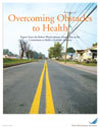 Overcoming Obstacles to Health Overcoming Obstacles to Health 
REPORT from the Robert Wood Johnson Foundation, 2013 This report by Paula Braveman and Susan Egerter for the Robert Wood Johnson Foundation Commission for a Healthier America, summarizes in clear language the current research on why Americans have worse health and shorter lives than people of other rich nations. The report analyzes the latest data and contains many useful charts.
|
 |
 Policy Guide (pdf) Policy Guide (pdf) 
UNNATURAL CAUSES This guide contains a menu of policy ideas that can improve health equity. Generally, such policies aim to: tackle inequality and improving living standards, protect those at the bottom of the pyramid, and reform decision-making processes. |
 |
 PolicyLink PolicyLink 
WEB SITE PolicyLink is a national research and action institute advancing economic and social equity by "Lifting Up What Works." By developing and implementing multifaceted strategies, PolicyLink seeks to ensure that everyone—including low-income communities of color—can contribute to and benefit from local and regional growth and development. |
 |
| « Prev 1 | 2 | 3 | 4 | 5 | 6 Next » |
|




